DROPS 79-27 |
|
|
|
|
DROPS Pullover, hat and scarf in Ull-Flamé, Potholder in Ribbon, Cupwarmer and Pillow in Snow, and Hair scrunchy in Snow.
DROPS 79-27 |
|
|
PULLOVER: Gauge: 9 sts x 12 rows on larger needles in stockinette st = 10 x 10 cm. Knitting tip: Use 2 balls at the same time and knit alternately 2 rows with each ball, to better mix up the thick and thin parts of the yarn. Rib: * K 3, P 3 *, repeat from * - *. Knitting tips (for V-neck): All decs are made from right side. Dec 1 st inside of 3 sts knit as follows from edge, as seen from the right side: K 1 (edge st knit in garter st), K 1 and P 1: After 3 edge sts: Slip 1 as if to knit, K 1, psso. Before 3 edge sts: K 2 tog Front: Cast on 38-41-47-50-56 sts on smaller needles with red/beige. Knit rib as follows: Row 1 (right side): Sizes XS, XL and XXL: K1 (edge st knit in garter st), * K 3, P 3*, repeat from * - *, finish with K 1 (edge st knit in garter st). Sizes S/M and M/L: K 1 (edge st knit in garter st), * K 3, P 3 *, repeat from * - *, finish with K 3 and K 1 (edge st knit in garter st). Row 2 (wrong side): Sizes XS, XL and XXL: K1 (edge st knit in garter st), * K 3, P 3*, repeat from * - *, finish with K 1 (edge st knit in garter st). Sizes S/M and M/L: K 1 (edge st knit in garter st), * P 3, K 3 *, repeat from * - *, finish with P 3 and K 1 (edge st knit in garter st). When the piece measures 4 cm, change to larger needles and stockinette st. When the piece measures 12 and 22 cm inc 1 st at each side = 42-45-51-54-60 sts. When the piece measures 36-37-38-39-40 cm bind off for armhole at each side every other row: 3 sts 1 time, 2 sts 0-0-1-1-2 times and 1 st 1-2-2-3-3 times = 34-35-37-38-40 sts. When the piece measures 42-44-46-48-50 cm divide at center front for the V-neck - in sizes S/M and M/L bind off the center st, in the other sizes divide without binding off a st. Put sts for one side on a holder and knit each side separately. 1st side: = 17-17-18-19-20 sts. Knit the 3 sts at neck edge as follows (as seen from the right side): K 1 (edge st knit in garter st), P 1, K 1. Dec 1 st for the neck every other row 6-6-6-7-7 times - see knitting tips = 11-11-12-12-13 sts remain on shoulder. Continue to knit the 3 sts at neck edge as before to finished measurements. Bind off when the piece measures 56-58-60-62-64 cm. 2nd side: Knit the same as 1st side, reversing all shaping. Back: Cast on the same as the front. Knit the rib as follows: Row 1 (right side): Sizes XS, XL and XXL: knit the same as the front. Sizes S/M and M/L: K 1 (edge st knit in garter st), * P 3, K 3 *, repeat from * - *, finish with P 3 and K 1 (edge st knit in garter st). Row 2 (wrong side): Sizes XS, XL and XXL: knit the same as the front. Sizes S/M and M/L: K 1 (edge st knit in garter st), * K 3, P 3 *, repeat from * - *, finish with K 3 and K 1 (edge st knit in garter st). Bind off for armhole as on front. When the piece measures 54-56-58-60-62 cm bind off the center 10-11-11-12-12 sts for the neck. On the next row dec 1 st at each neck edge = 11-11-12-12-13 sts remain on each shoulder. Bind off when the piece measures 56-58-60-62-64 cm. Sleeve: Cast on 26-26-26-32-32 sts on smaller needles with red/beige. Knit rib for 12 cm, keeping 1 edge st at each side in garter st. Change to larger needles and stockinette st. When the piece measures 14 cm inc 1 st at each side every 11-8-6-10-7 cm a total of 4-5-6-4-5 times = 34-36-38-40-42 sts. When sleeve measures 51-49-47-46-44 cm bind off for sleeve cap at each side every other row: 3 sts 1 time, 2 sts 1 time and 1 st 1-2-2-3-4 times, then bind off 2 sts at each side until the piece measures 57 cm. Bind off the remaining sts. Assembly: Sew shoulder seams. Collar: Pick up approx. 42-50 sts around the neck on smaller circular needles with red/beige, beginning at bottom of V-neck. Knit back and forth as follows: K 1 row from wrong side and then K 1 row knit right side, increasing evenly distributed to 77 or 83 sts (divisible by 6 + 5). Then knit rib, keeping 1 st in garter st and K 3 at each side at the center front - seen from the right side - alternately knit 1 row red/beige and 1 row natural over all sts - do not cut yarn after each row – instead scoot sts to the side of needle where the yarn is. When the collar measures 10 cm inc all P 3 (seen from the right side) to P 4 = 89 to 96 sts. When the collar measures 16 cm bind off in rib with red/beige. Lay right side of the collar over the left at bottom of V-neck and sew the garter st edge on right side to the picked-up edge on left side. Sew left side of the collar to picked-up edge on the right side of neck (on wrong side of work). Sew in sleeves. Sew sleeve and side seams using edge sts as a seam allowance. HAT: Sizes: S/M - M/L Materials: DROPS ULL-FLAMÉ, (alternative SNOW from Garnstudio) 100-100 gr nr 01, natural DROPS 10 mm [US 15] needles, or size needed to obtain correct gauge. Gauge: 10 sts x 14 rows in stockinette st = 10 x 10 cm Rib: * K 3, P 3 *, repeat from * - *. Hat: Cast on 54-60 sts and knit 5 rows stockinette st (= rolled edge) - measure the work from here. Change to rib. When the piece measures 8-9 cm knit stockinette st to finished measurements, decreasing 4-5 sts evenly distributed on the first row = 50-55 sts. When hat measures 12 cm put 5 markers in work as follows: 1 st, 1 marker, * 10-11 sts, 1 marker *, repeat from * - * a total of 5 times, after last marker there are 9-10 sts. Then dec 1 st every other row 8-9 times at each marker by knitting together the first 2 sts on the left side of markers = 10 sts remain. Cut yarn and pull through the remaining sts, fasten neatly. Hat measures approx. 23-24 cm. Sew at center back. SCARF: Measurements: approx. 20 x 150 cm [7-⅞" x 59"] Materials: DROPS ULL-FLAMÉ, (alternative SNOW from Garnstudio) 150 gr nr 01, natural DROPS 9 mm [US 13] needles, or size needed to obtain correct gauge. Gauge: 8 sts in pattern = 10 cm wide Pattern: Row 1: knit. Row 2: * K 1, yo *, repeat from * - *, end with K 1. Row 3: Knit all K sts from previous row, letting yo drop (= long st). Repeat rows 1 to 3. Scarf: Loosely cast on 16 sts and knit Pattern - see instructions above. When scarf measures approx. 148 cm, knit 1 row over all sts and bind off. CUPWARMER: Materials: DROPS SNOW, from Garnstudop 50 gr nr 01, natural DROPS 6 mm [US 10] needles, or size needed to obtain correct gauge. 2 DROPS wood buttons, nr 512 Gauge: 13 sts x 26 rows in garter st = 10 x 10 cm. Cupwarmer: Measure the height of the cup, multiply that measurement by 1.3 = the number of sts to cast on. Measure around cup and add 4 cm, knit garter st until that length. Note: if the cup is larger at top that at bottom, knit 2 rows garter st over only half the sts when you have knit 1/3 the length, repeat short rows when you have knit 2/3 the length. When piece is the right length, make an opening for the handle by dividing piece at center of row. Knit each side separately for approx. another 3 cm. After 1 cm make a buttonhole (by knitting together the 2 center sts) and then make a yo (make 1 buttonhole on each side). Bind off. Sew 2 buttons approx. 1 cm from cast-on edge to match up with buttonholes. POTHOLDER: Measurements: approx. 16 x 16 cm [6.25" x 6.25"] Materials: DROPS Ribbon (alternative PARIS from Garnstudio) 50 gr nr 01, ivory 50 gr nr 02, natural DROPS 4.5 mm [US 7] needles, or size needed to obtain correct gauge. Gauge: 16 sts x 26 rows in garter st with 2 strands = 10 x 10 cm. Potholder: Cast on 26 sts with 1 strand of each color. Knit garter st until the piece measures 15 cm. Cast on 10 new sts at one side for loop, knit 1 row over all sts and then bind off all sts. Sew loop end approx. 1 cm lower on side. Knit a second potholder. Pillow case: Measurements: 45 x 45 cm [17.75" x 17.75"] The pillow case can be knit with 1 or 2 strands. If you knit with 1 strand follow the numbers shown before ( ), if you knit with 2 strands follow the numbers inside ( ). Materials: DROPS SNOW from Garnstudio 350 (450) gr nr 01, natural DROPS 9 mm [US 13] (12 mm [US 17]) needles, or size needed to obtain correct gauge. 5 DROPS wood buttons, nr 502 Gauge: 1 strand: 10 sts x 20 rows in garter st =10x10 cm 2 strands: 7 sts x 16 rows in garter st =10x10 cm Pillow: Loosely cast on 43 (30) sts with 1 (2) strands Snow. Knit garter st. If you do not want an overlapping edge with buttonholes, bind off all sts when the piece measures 84 cm. If you want an overlapping edge continue until the piece measures 98 cm then make 5 buttonholes evenly distributed on the row. 1 buttonhole = K 2 tog and make a yo. On the next row, twist and knit the yo so the buttonhole will not be too large. Knit 4 rows garter st after the buttonholes and then bind off. Assembly: Pillow without overlapping edge: Fold piece in half and sew side seams. Insert pillow, sew top seam and sew on 5 buttons as decoration 8 cm down from edge. Pillow with overlapping edge: Fold the bottom 84 cm of pillow in half (overlapping edge = approx. 16 cm), sew side seams. Insert pillow. Fold overlapping edge over pillow and sew on buttons so that they match up with the buttonholes. HAIR SCRUNCHY: Sizes: One size Materials: DROPS SNOW, from Garnstudio 50 gr in optional color 2 DROPS 4 mm double-pointed needles, or size needed to obtain correct gauge. Gauge: 16 sts in stockinette st = 10 cm wide. Hair scrunchy: Cast on 5 sts on 1 double-pointed needle. Knit 1 row, * slide sts to right side of needle without turning work, pull yarn tight on back side and knit 1 row from same side as previous row *, repeat from * - *. You are making an I-cord tube – be sure to pull the yarn tight across the back when starting a new row so that the tube will be consistent. Bind off when tube measures 50 cm. Pull approx. 20 cm long piece of elastic through tube and knot ends together. Sew tube ends together with small sts. |
|
 |
|
Have you finished this pattern?Tag your pictures with #dropspattern or submit them to the #dropsfan gallery. Do you need help with this pattern?You'll find 24 tutorial videos, a Comments/Questions area and more by visiting the pattern on garnstudio.com. © 1982-2025 DROPS Design A/S. We reserve all rights. This document, including all its sub-sections, has copyrights. Read more about what you can do with our patterns at the bottom of each pattern on our site. |










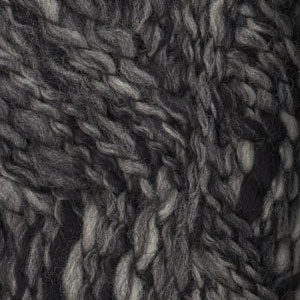








































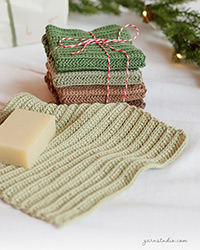


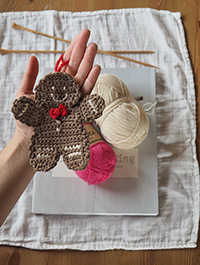
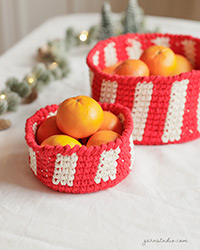
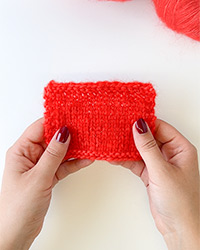
Post a comment to pattern DROPS 79-27
We would love to hear what you have to say about this pattern!
If you want to leave a question, please make sure you select the correct category in the form below, to speed up the answering process. Required fields are marked *.